From Frames to Film at Ford Motor Company
Did you know that the Ford Motor Company was not only a pioneer in the automotive industry but also involved in the world of filmmaking? .
In the early years of the Ford Motor Company, various photographers and firms were hired to capture images, leading to the creation of the Ford Motor Company's Photographic Department. Their initial purpose was to document production methods, provide illustrations for publications, and promote Henry Ford and his company. This was the backbone that sparked another of Henry Ford's interests: filmmaking.
Henry Ford developed an interest in filmmaking in 1913 after he saw a film made by an external company about the Highland Park automobile factory. By April 1914, he instructed Ambrose B. Jewett from Ford’s Advertising Department to procure a camera and an operator. Within months, the company became established for their use of film in advertising, as documentation, and as a way to share industrial processes with the general public.

Ambrose B. Jewett of Ford Advertising Department is visible at center, with painter Irving Bacon (left) and Henry Ford (right), 1919. / THF95164
Henry Ford was fascinated by the potential of motion picture film to train workers and communicate daily news to the public, including scenes from their lives and the wonders of manufacturing at the Ford Motor Company. Starting with a modest two-man team in 1914, the Motion Picture Department expanded to 24 members, acquiring advanced 35mm cameras and establishing a film processing operation at the Highland Park Plant, comparable to Hollywood studios. By 1915, they began releasing news reels as “The Ford Animated Weekly.” Each episode covered a variety of current news events, such as the launch of the U.S.S. Arizona and the Liberty Bell on tour for the Panama-Pacific Exposition, in addition to animated segments.
The company's inaugural film, "How Henry Ford Makes One Thousand Cars a Day," naturally centered on its own processes. Initially, the department concentrated on current events and educational content; by the 1920s, it had shifted towards promoting popular themes like road quality, safety, and advanced farming techniques. As early as 1917, they recognized that film could assist in educating factory workers in their repair work by slowing down footage of fast-moving machines--a notion highlighted in an article from “The Ford Man” published on September 20, 1917.
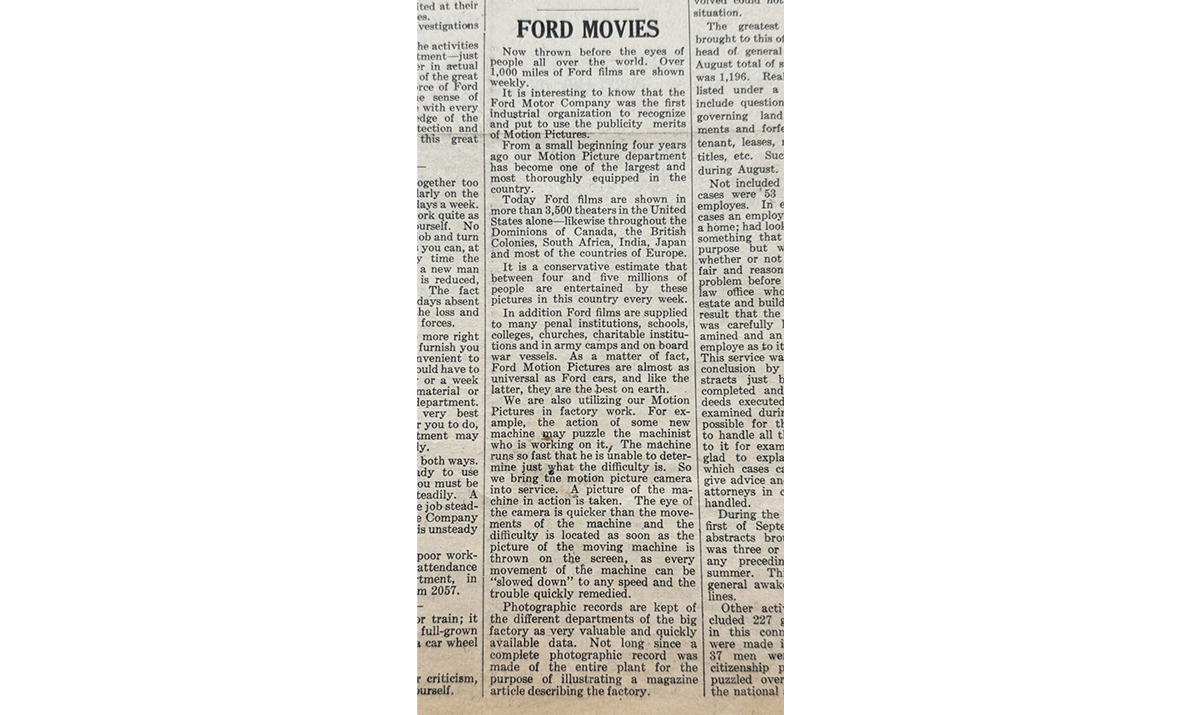
Article from "The Ford Man" periodical, September 20, 1917 / Image by staff of The Henry Ford
The Ford Motor Company Photographic Department was responsible for both motion pictures and still photography, remaining the only department of its kind until 1918. It was initially housed in the administration building at the Highland Park Plant, moving to the administration building at the Rouge Plant in Dearborn, Michigan, in the mid-1920s. In 1956, it relocated again, this time to the World Headquarters on Michigan Avenue in Dearborn.
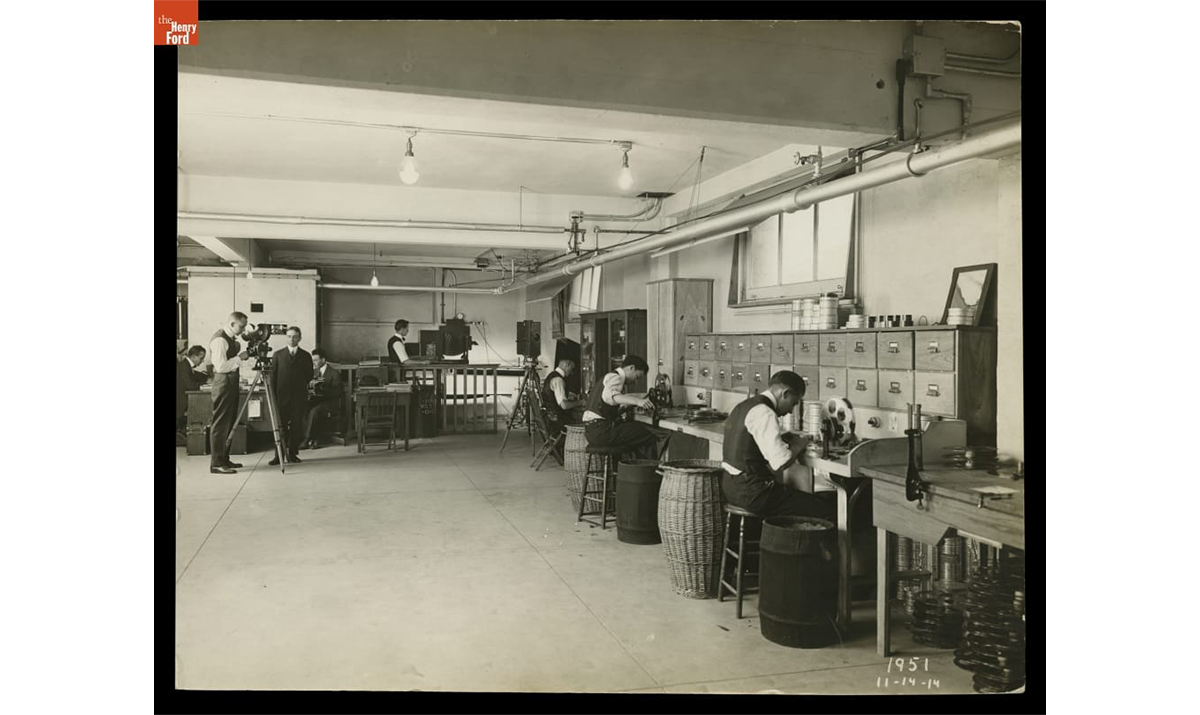
Workers at Cutting Tables and Copy Camera, Ford Photographic Department, Highland Park Plant, 1914. / THF124964
Initially, the department's photographers focused on documenting the company's products, facilities, and workforce. However, following the move to the Rouge Plant, the focus gradually shifted toward public relations and promotional activities. While few internal documents regarding the department's organization and management have survived, the negatives and photos preserved in the company's archives from the 1950s were ultimately donated to The Henry Ford in 1964. Notable photographers who worked for Ford Motor Company include George Ebling, Joseph Farkas, Michael Malley, E.S. Purrington, William Stettler, and C.E. Wagner.
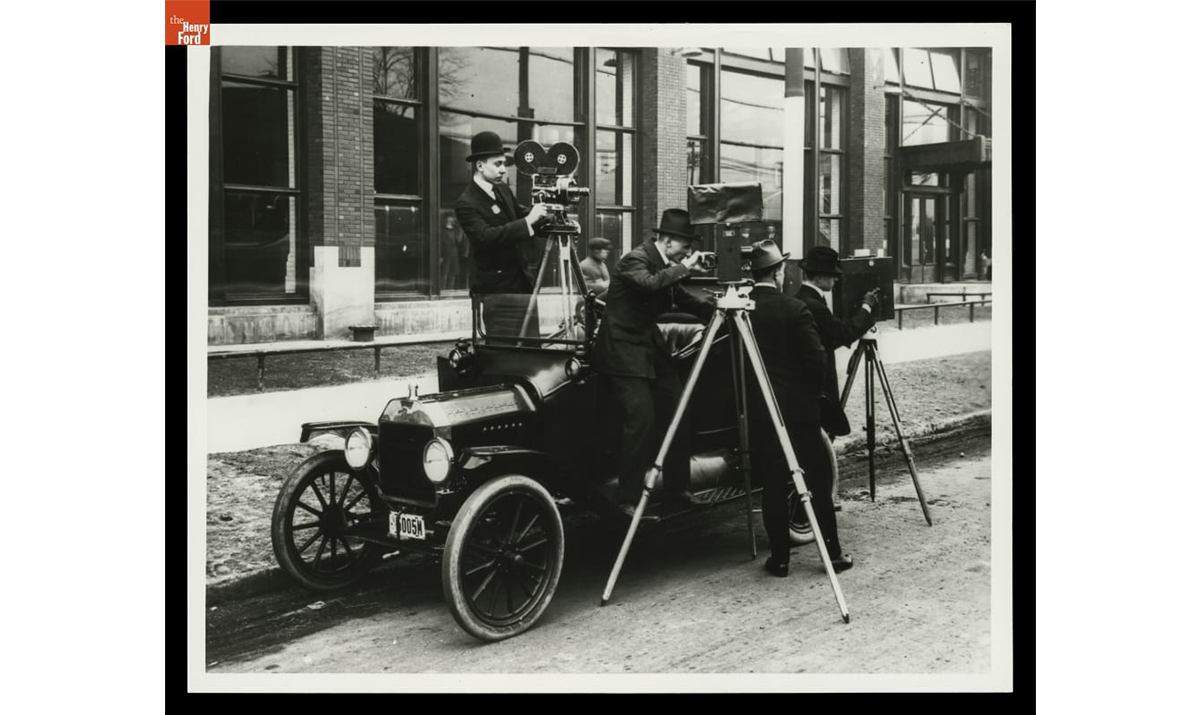
Ford Motor Company Photographers with Ford Model T Touring Car outside the Highland Park Plant. / THF119387
For years, the Ford Motor Company was one of the world's major film producers, with its films reaching audiences both nationally and internationally. These films were distributed through Ford branches to Ford agents, who then screened them in theaters within their respective territories.
In 1956, Ford Public Relations films achieved a record audience of over 24 million viewers worldwide. The total audience for the year, excluding television, reached 24,267,455, reflecting significant growth in both domestic and international viewership. Throughout the 1950s, the types of films produced included categories like the Automobile Industry, Americans at Home, Vacation Films, Educational Subjects, and Driver Education Films.
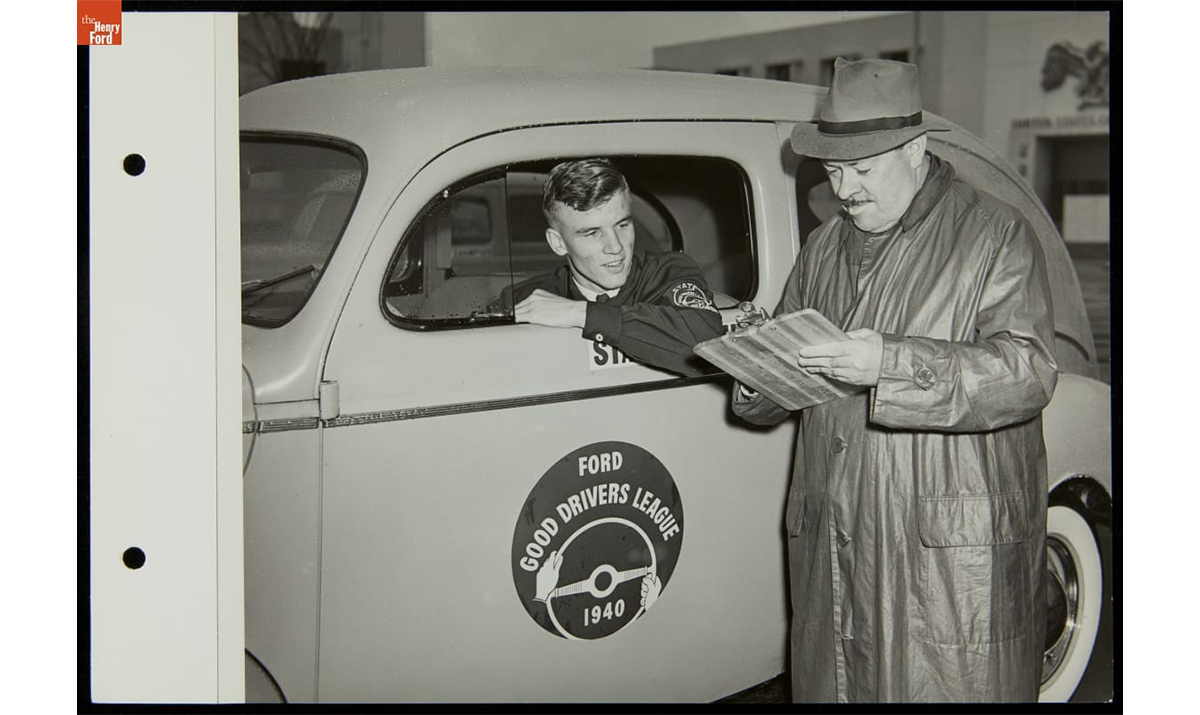
Young Man Taking Driver's Test, Ford Good Drivers League, Ford Exposition, New York World's Fair, 1940. / THF216125
In 1963, Ford Motor Company gifted over 1.5 million feet of motion picture film, created between 1914 and the early 1940s by its Motion Picture Department, to the United States National Archives. The Ford Film Collection provides comprehensive coverage of the era's current events, educational topics, and special interests. The Henry Ford's Benson Ford Research Center secured permission on December 15, 1994, to reproduce and distribute high-resolution copies from the National Archives of those collections relevant to the early days of the Ford Motor Company, Henry Ford's personal endeavors, and subjects associated with The Henry Ford. The versions available in our online catalog and on YouTube are low-resolution samples with time codes, such as "Ford and the Century of Progress, Part 2."
The Ford Motor Company's journey from still photography to motion pictures is a testament to its innovative spirit and commitment to communication and education. By embracing filmmaking, Henry Ford not only documented the company's achievements but also shared the wonders of manufacturing and modern life with the world. Thankfully, Henry Ford and Ford Motor Company had such a passion and dedication to keep this work flowing, and it is now available for research. If you’d like to learn more about this collection or others, please email us at research.center@thehenryford.org.
Stephanie Lucas is a Research Specialist at The Henry Ford.

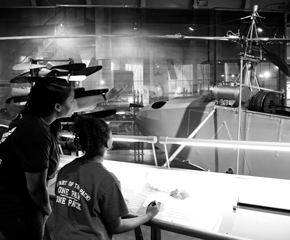
Facebook Comments